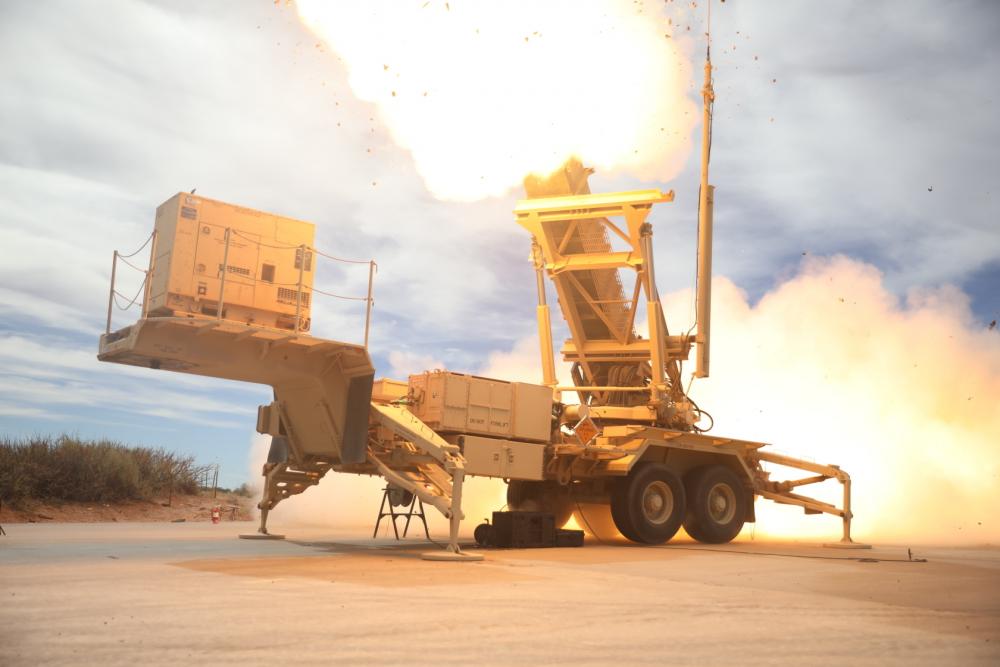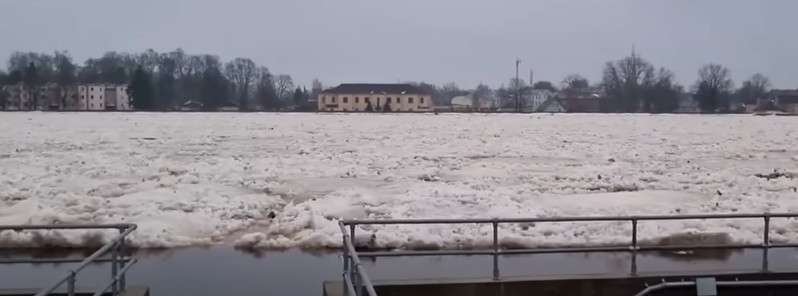Now, they are just about ready to use it on the battlefield to protect Ukrainian cities and infrastructure from Russian attacks.
“The Ukrainian soldiers are impressive, and absolutely a quick study,” said Brig. Gen. Shane Morgan, commanding general of the Army’s Fires Center of Excellence. “Due to their extensive air defense knowledge and experience in a combat zone, it was easier — though it’s never easy — for them to grasp the Patriot system.”
“They are the best of the best in what they do in air defense for Ukraine.”
The course was conceived as a 10-week basic program, but the Ukrainians moved rapidly through the assignments, according to a senior Fort Sill official, who like others quoted for this story was granted anonymity under the ground rules set for the visit involving a small group of reporters. The group breezed through the skill requirements and were able to spend more time learning how to operate the system as a unit against simulated threats, the official said.
The trainees, who range in age from 19 to 67, are combat veterans with experience using their own air defense systems against Russian threats, the official said. They progressed quickly through the course, and after a certain point were able to design their own scenarios based on the tactics they know the Russians use in combat.
“They understand how to fight, they understand how to fight air defense systems,” the senior Fort Sill official said. “That’s one of the reasons we were able to train some aspects quicker than we would have with the normal students starting from scratch.”
Ready for battle
The Patriot is a highly complex system to operate, and typically takes U.S. soldiers up to a year to learn. But after just a few weeks, the Ukrainians were already able to independently set up and operate the system against a simulated threat in under 45 minutes, which is the U.S. Army’s standard. They complete this “culminating event” two or three times a day to get in as much practice as possible before heading back to Europe, according to one U.S. trainer.
Once the Ukrainians wrap up instruction in Fort Sill in the next few days, they will head to an undisclosed location in Europe to join another group of trainees who are completing a parallel course with the Dutch and German militaries, said Army spokesperson Col. Martin O’Donnell. There, they will complete final checks on the two donated Patriot systems, one from the U.S. and one combining components from Germany and the Netherlands, before heading back to Ukraine with the new equipment in the coming weeks.
As reporters watched, the soldiers drove a convoy of nine vehicles, including five launching stations, air surveillance radar and an array of supporting communications and command-and-control vehicles.
After connecting the communications cables, the soldiers spend about 20 minutes preparing the equipment. Some stand atop the launchers, ensuring each missile canister is secure. Once the launchers are set, they run back up the range to the command vehicles, where they practice detecting, tracking and intercepting a simulated threat from the north.
A group of Ukrainian soldiers smiles and gives reporters the thumbs-up as they trek back across the field. Speaking Ukrainian, they say they are ready to go.
The language barrier initially made instruction difficult, the U.S. trainer said, noting that the Ukrainians had varying levels of English proficiency. The team started with only two interpreters, but quickly bumped that up to 18 once they realized they needed it.
Fort Sill officials said they were impressed with the Ukrainians’ hard work and dedication. They live in the Fort Sill barracks, eat in the dining hall with U.S. soldiers, and are not authorized to leave the base.
After they arrived, they made a special request: to add more soup options to the menu.
“They like soup. They’re very, you know, soup-centric. So we added some soup to the meals that they received,” the senior Fort Sill official said.
The instructors carried out a “conditions-based approach” to the training, meaning that they were able to speed up or slow down the program based on the proficiency of the soldiers, the senior Fort Sill official said. They coordinated closely with officials from the U.S. Army Europe and Africa command and the Security Assistance Group-Ukraine, the fledgling group established last fall in Germany to coordinate security assistance for Ukraine, to include realistic threats and conditions that the Ukrainians expect to face.
O’Donnell emphasized that the Patriot is a “purely defensive weapon system” that will help Ukraine protect cities and critical infrastructure from Russian drones, aircraft and cruise and ballistic missiles
“The Patriot air defense system presents no, I say again no, threat to Russia,” he said.
At the same time as the Ukrainian air defenders are finishing Patriot training, hundreds of their colleagues are in Germany completing other advanced courses. Roughly 2,500 Ukrainian soldiers — enough to operate one “mechanized” Bradley Fighting Vehicle battalion, three Stryker battalions, one field artillery battalion and a brigade staff — are conducting combined arms training at the Grafenwoehr and Hohenfels areas. That includes instruction on basic soldier tasks such as marksmanship as well as how to operate as a unit.
An additional 1,400 — two mechanized/Bradley battalions and one field artillery battalion — have already completed that training and are back in Ukraine right now on the front lines, O’Donnell said.
Ultimately the Ukrainians’ drive and dedication “made this training very enjoyable and very easy,” the trainer said, noting that now they are “self-sustaining.” Once they arrive back in Ukraine, they plan to teach their colleagues how to operate the Patriot, passing on the lessons they learned in Fort Sill.
“This is where everything comes together from learning maintenance when they first got here to fixing equipment, to going all the way to where they are self-sustaining and doing exactly what they are supposed to as a unit is very impressive,” the trainer said.




